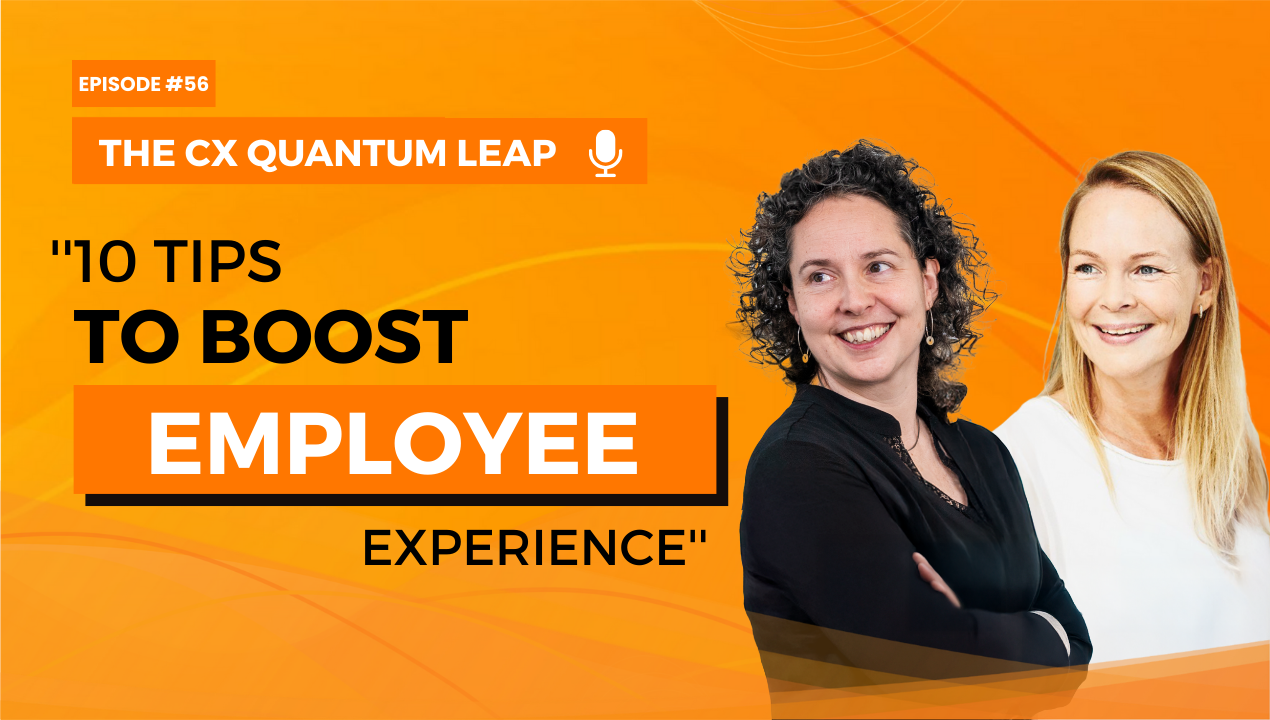Yes, employee experience has finally hit the corporate buzz-o-sphere. “There’s no CX without EX!” is plastered on every keynote slide. Yet in most organisations the two still live in different ZIP codes—HR runs engagement surveys, Customer teams obsess over NPS, and nobody connects the dots.
So let’s fix that.
Below you’ll find the ten design principles I rely on when weaving employee experience straight into a CX transformation. They’re battle-tested in government agencies, B2B giants and scale-ups alike—and (good news!) they don’t require heroic budgets or a 14-month org chart redesign. Ready? Let’s dive in.
1. Connect all the dots—before you move a pixel
Picture the average employee’s calendar: “CRM roll-out”, “Agile 2.0 stand-up”, “AI Innovation Lab”. Project No. 385 lands on their desk with zero context and their first thought is, Why should I care?
Try this: map every active initiative onto one story that starts with the customer driver and ends with the employee’s daily task. “We’re upgrading CRM so you can pull a customer’s history in two clicks—freeing 90 seconds each call to give real personal attention.” Suddenly that “tech project” feels like a human win.
2. Tie customer drivers to meaningful work
Our data show personal attention is 5× more impactful on loyalty than “ease of account”. When employees realise the customer is craving the very human behaviour they crave to deliver, energy spikes. Swap sterile KPIs for drivers that resonate—then watch front-line teams light up.
3. Build journey & channel teams (before redrawing the org chart)
Silos aren’t a lines-on-paper problem; they’re a will-to-co-operate problem. Spin up ad-hoc journey teams first. Put the call-centre rep, finance clerk, UX designer and product owner in one virtual room to fix “Become a Customer”. Once they taste cross-functional momentum, structure can follow.
Real-life déjà vu: in every first journey workshop someone points at an “automatic email” step and a neighbour says, “That’s me—I manually send it.” Cue laughter, insights and an instant cooperation upgrade.
4. Mirror employee journeys with the customer journey
Mapping “Apply for Social Benefits” is great. Now flip the paper: what hoops do employees jump through to deliver each customer step? Triplicate form entry? Thirty-seven clipboard fields? Remove the friction and you gift time and joy to both sides of the counter.
5. Co-create tiny habits—and make it fun
Behavioural science is clear: playful micro-actions beat grand change programmes. Draft a menu of ten tiny habits per role (we brainstorm, then spend one hour with three real employees to sanity-check). Wrap the launch in an internal campaign—Angels, Warriors, Everyday Heroes, whatever theme sparks smiles—and let volunteers pick their favourites.
6. Embed those habits into existing routines
A perfect tiny habit takes zero extra minutes. Example: every time a headset beeps for a new call, a rep pauses two seconds and thinks, How can I give personal attention? It piggy-backs on an existing trigger, no additional workload. Aim for 0–5 minutes; your adoption rate will soar.
7. Equip leaders with their own micro-menu
Culture lives where leadership spends its questions. Once a week, a manager might ask,
“When did you feel you truly impacted a customer last week?”
That single prompt shifts retros from backlog velocity to human value. Provide leaders 5-6 such prompts plus their own tiny habits (e.g. start every team huddle with a quick customer story). It’s the stealth KPI overhaul.
8. Continually surface EX barriers
During your regular one-on-ones or stand-ups, ask:
“What’s one thing that made it hard to delight customers yesterday?”
Most hurdles are fixable (permissions, a convoluted PDF, a missing data field). Even when the answer is “the creaky claims system”, acknowledging it—and plotting a workaround—maintains trust.
9. Measure human-centric culture every 6 months
We run a lightweight survey across the three pillars—Customer, Employee, Purpose—and analyse drivers of affective commitment (that “I feel at home here” vibe). Watching those scores shift is your helicopter view: are the tiny habits, journey teams and KPI tweaks nudging the culture needle? Re-steer accordingly.
10. Bake CX, EX and Purpose into recruitment & onboarding
Forget dreary Day-1 slide decks. Let candidates hear frontline stories, solve a real customer puzzle in the interview and meet leaders who share why they’re proud to work here. In onboarding, swap history lectures for interactive mini-sprints: fix a micro-journey, shadow customer calls, reflect on best-self moments. You’ll anchor purpose before the email account is even created.
Wrapping it up: keep it human, keep it practical
If all this feels like common sense, that’s because it is. Whenever you’re stuck, do the coffee-machine litmus test: “Would I treat my best friend’s experience this way?” If not, redesign.
So—what tiny habit will you experiment with this week? Drop it in the comments; let’s learn from each other and keep the human sauce flowing.
This blog is based on the podcast transcript.





